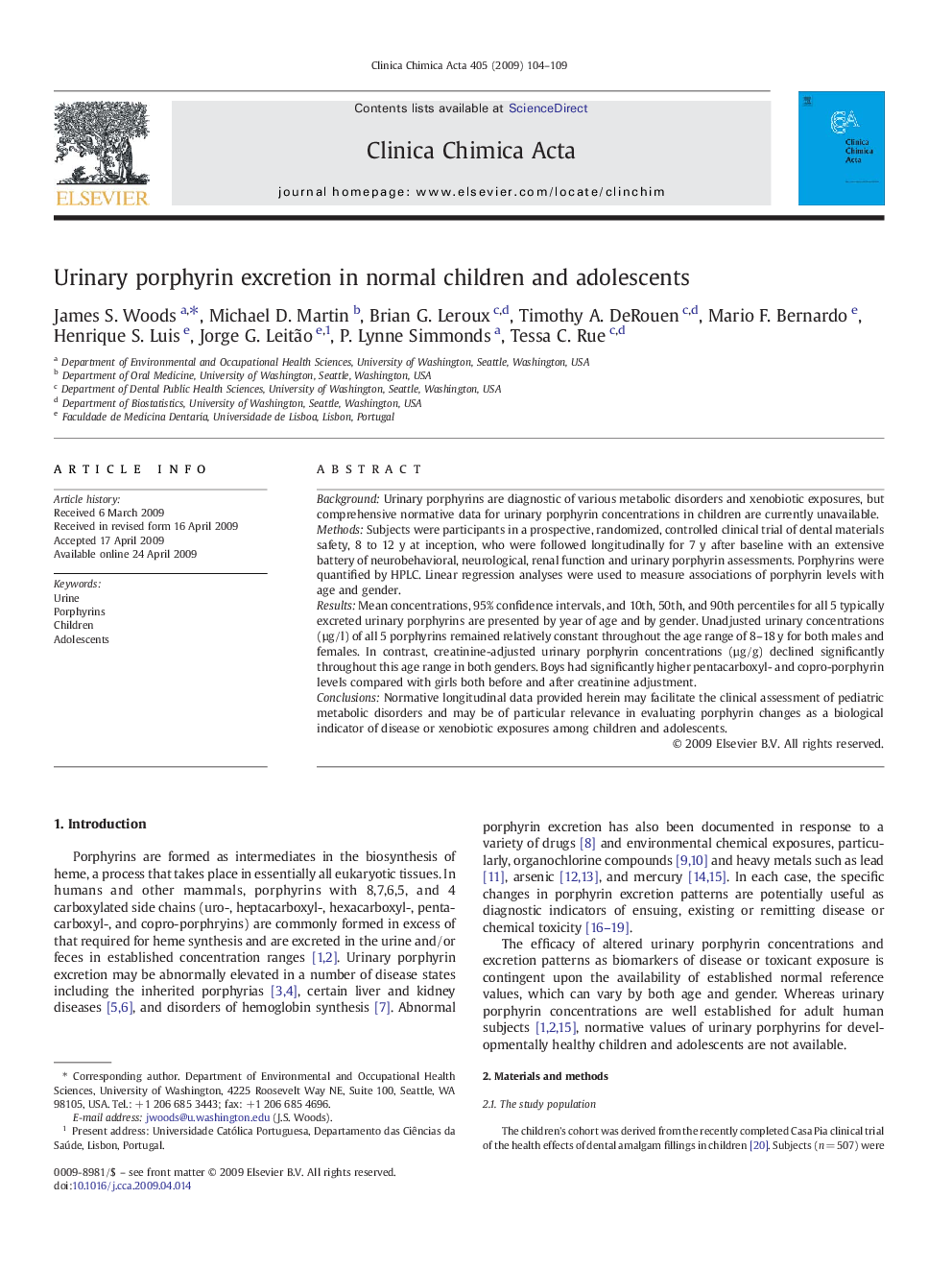| Article ID | Journal | Published Year | Pages | File Type |
|---|---|---|---|---|
| 1966622 | Clinica Chimica Acta | 2009 | 6 Pages |
BackgroundUrinary porphyrins are diagnostic of various metabolic disorders and xenobiotic exposures, but comprehensive normative data for urinary porphyrin concentrations in children are currently unavailable.MethodsSubjects were participants in a prospective, randomized, controlled clinical trial of dental materials safety, 8 to 12 y at inception, who were followed longitudinally for 7 y after baseline with an extensive battery of neurobehavioral, neurological, renal function and urinary porphyrin assessments. Porphyrins were quantified by HPLC. Linear regression analyses were used to measure associations of porphyrin levels with age and gender.ResultsMean concentrations, 95% confidence intervals, and 10th, 50th, and 90th percentiles for all 5 typically excreted urinary porphyrins are presented by year of age and by gender. Unadjusted urinary concentrations (µg/l) of all 5 porphyrins remained relatively constant throughout the age range of 8–18 y for both males and females. In contrast, creatinine-adjusted urinary porphyrin concentrations (µg/g) declined significantly throughout this age range in both genders. Boys had significantly higher pentacarboxyl- and copro-porphyrin levels compared with girls both before and after creatinine adjustment.ConclusionsNormative longitudinal data provided herein may facilitate the clinical assessment of pediatric metabolic disorders and may be of particular relevance in evaluating porphyrin changes as a biological indicator of disease or xenobiotic exposures among children and adolescents.
